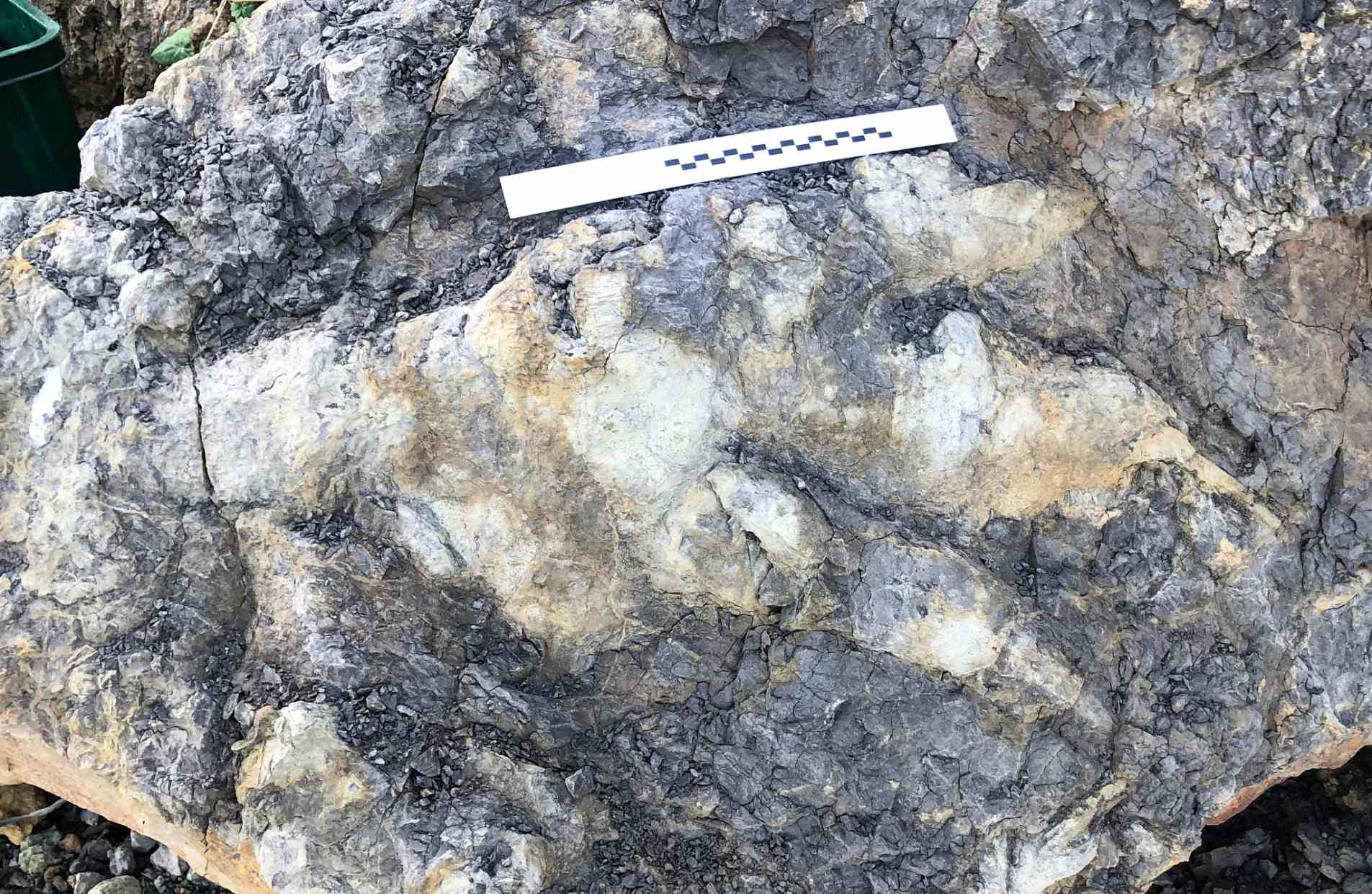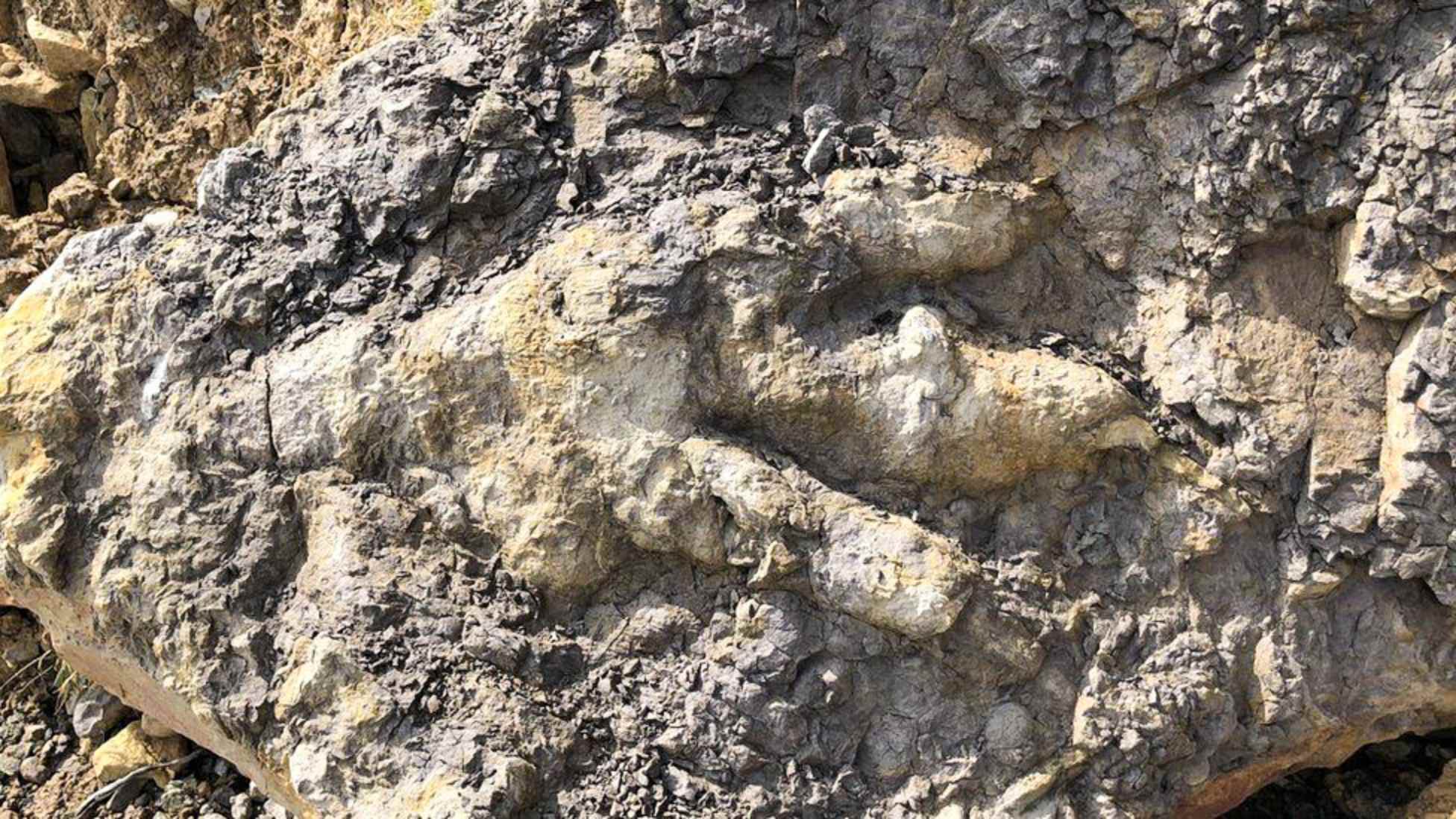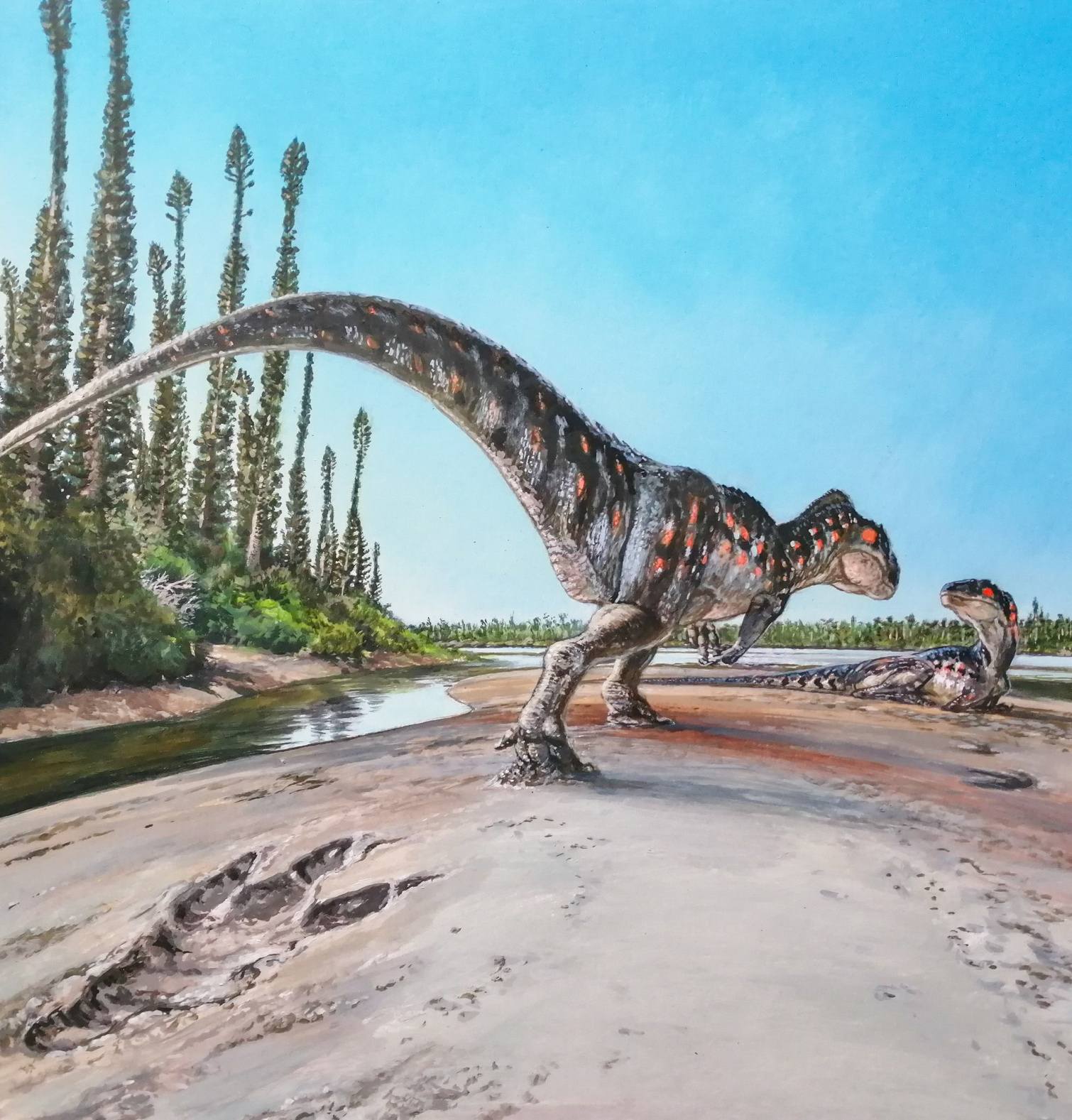Discovering footprints left by dinosaurs is always an exciting event for paleontologists and enthusiasts alike. These prehistoric creatures roamed the earth millions of years ago, leaving behind traces of their existence in the form of fossils. Recently, an incredible discovery has been made in Yorkshire, England, where an almost meter-long footprint from a giant, meat-eating theropod dinosaur from the Jurassic period has been found.

What makes this find even more fascinating is that the footprint appears to capture the moment when the dinosaur rested or crouched down some 166 million years ago. This newly found footprint represents the largest of its kind ever found in Yorkshire, offering a unique opportunity for researchers to study the behavior and habits of these incredible creatures from the past.
The Yorkshire coastal region is well-known for its exceptional production of remarkable fossils, some of which are visually stunning and scientifically valuable. Among these are the numerous dinosaur footprints that attract professional paleontologists and fossil enthusiasts from far and wide, who strive to uncover the exceptional finds in this region. Nevertheless, it is not every day that one would come across a footmark that spans a striking length of 80 centimeters.
This record-breaking footprint was found by local archaeologist Marie Woods in April 2021. She had gone out along the coast and found this amazing paleontological impression completely by chance. In her excitement and disbelief, Marie made contact with local fossil experts, but none were aware of the track she was describing. Following this, she then contacted Dr Dean Lomax, a paleontologist at The University of Manchester and author of Dinosaurs of the British Isles.
This new specimen of a rare large theropod dinosaur print of Middle Jurassic age is described from the Long Nab Member of the Scalby Formation, Cleveland Basin, Yorkshire. This is only the sixth specimen of this type recorded from the Cleveland Basin since they were first discovered in 1934.

According to the lead author of the study, geologist John Hudson, “This important discovery adds further evidence that meat-eating giants once roamed this area during the Jurassic. The type of footprint, combined with its age, suggests that it was made by a ferocious Megalosaurus-like dinosaur, with a possible hip height between 2.5 and 3 meters.”
The large tridactyl weakly mesaxonic print is 80.0 cm long and 41.0 cm wide. In the absence of a trackway, it is difficult to be sure whether the track was made by a left or right foot.
The researchers described the footprint as being Megalosauripus, which is not a dinosaur species but rather a specific type of footprint made by theropod dinosaurs. Footprints are categorized by type as it’s often impossible to be certain which dinosaur species left the track behind.

As well as being an important record of ancient life in its own right, fossil footprints also give clues about the behavior of ancient animals. Fossil tracks have recorded evidence of dinosaurs walking, running, and swimming. This Megalosauripus footprint might show a near-miss for this dinosaur, with the paper suggesting that it could represent the dinosaur slipping slightly during a walk. Other interpretations are also possible.
“Features of the footprint could suggest that this large predator was squatting down before standing up,” said co-author Dr Dean Lomax from the University of Manchester. “It’s fun to think this dinosaur might well have been strolling along a muddy coastal plain one lazy Sunday afternoon in the Jurassic.”
Features of the footprint seem to suggest this Megalosaurus-like theropod squatted down in the mud, before walking away to live another day. It’s fun to think this dinosaur may have been strolling along one lazy Sunday afternoon in the Jurassic.
Published in @GeolSoc. pic.twitter.com/whv5EPqXCj
— Dr Dean Lomax (@Dean_R_Lomax) February 16, 2023
These footprints were formed during the Middle Jurassic, which lasted from around 174 to 163.5 million years ago. At the time, northern Yorkshire was part of a coastal floodplain, whose muddy shores would have been ideal for preserving footprints.
The footprint, which is now in the guardianship of Scarborough Museum and Galleries, will hopefully go on public display with the Rotunda Museum’s other fossil footprints, once conservation has been completed.
The study originally published in the journal Proceedings of the Yorkshire Geological Society. 16 February 2023.



